NOTE: The colors are provided as a possible linear progression (red/easiest to violet/most challenging) for people that might prefer a more linear structure. Our core philosophy is that through creativity every color can be made easy or challenging for any learning level. |
SOCIOLINGUISTICS |
 | - Regional dialects of the USA
|
 | - Regional dialects of the UK
|
 | - Comparison of American and British language varieties
|
 | - Comparison of American and Canadian language varieties
|
 | - Comparison of American English and language varieties of Australia and New Zealand
|
 | - Comparison of American and Indian language varieties
|
 | - The English language in the countries where it is second native or foreign
|
LINGUISTICS |
 | - Using proper grammar and mechanics of writing
- Identify and correctly use clauses (e.g., main and subordinate), phrases (e.g., gerund, infinitive, and participial), sentence construction (e.g., parallel structure, subordination, proper placement of modifiers), and mechanics of punctuation (e.g., quotation marks, commas at end of dependent clauses, semicolons, colons, ellipses, hyphens, dashes, brackets)
- Demonstrate an understanding of proper English usage (e.g., consistency of verb tenses) and control of grammar, paragraph and sentence structure, diction, and syntax
- Use correct and varied sentence types and sentence openings to present a lively and effective personal style
- Spell derivatives correctly by applying the spellings of bases and affixes
- Use correct capitalization
- Proper use of time and aspect forms (Perfect / Non-Perfect and Continuous / Non-Continuous)
|
 | - Developing vocabulary
- Use knowledge of Greek, Latin, and Anglo-Saxon roots and affixes to understand content-area vocabulary
- Trace the etymology of significant terms used in political science and history
- Apply knowledge of Greek, Latin, and Anglo-Saxon roots and affixes to draw inferences concerning the meaning of scientific and mathematical terminology
- Discern the meaning of analogies encountered, analyzing specific comparisons as well as relationships and inferences
- Clarify word meanings through the use of definition, restatement, example, comparison, or contrast
- Stylistic differentiation in the English vocabulary
|
 | - Understand the most important points in the history of English language and use common word origins to determine the historical influences on English word meanings
- Write texts of different genres (at least 500 to 700)
- Write fictional or autobiographical narratives
- Develop a standard plot line (having a beginning, conflict, rising action, climax, and denouement) and point of view
- Develop complex major and minor characters and a definite setting
- Use a range of appropriate strategies (e.g., dialogue; suspense; naming of specific narrative action, including movement, gestures, and expressions)
- Write biographies, autobiographies, short stories, or narratives
- Relate a clear, coherent incident, event, or situation by using well-chosen details
- Reveal the significance of, or the writer’s attitude about, the subject
- Employ narrative and descriptive strategies (e.g., relevant dialogue, specific action, physical description, background description, comparison or contrast of characters)
- Write responses to literature
- Develop interpretations exhibiting careful reading, understanding, and insight
- Organize interpretations around several clear ideas, premises, or images from the literary work
- Justify interpretations through sustained use of examples and textual evidence
- Write expository compositions, including analytical essays and research reports
- Marshal evidence in support of a thesis and related claims, including information on all relevant perspectives
- Convey information and ideas from primary and secondary sources accurately and coherently
- Make distinctions between the relative value and significance of specific data, facts, and ideas
- Include visual aids by employing appropriate technology to organize and record information on charts, maps, and graphs
- Anticipate and address readers’ potential misunderstandings, biases, and expectations
- Use technical terms and notations accurately
- Write persuasive compositions
- State a clear position or perspective in support of a proposition or proposal
- Describe the points in support of the proposition, employing well-articulated evidence
- Anticipate and address reader concerns and counterarguments
- Write summaries of reading materials
- Include the main ideas and most significant details
- Use the student’s own words, except for quotations
- Reflect underlying meaning, not just the superficial details
- Write documents related to career development, including job applications
- Present information purposefully and succinctly and meet the needs of the intended audience
- Follow the conventional format for the type of document (e.g., letter of inquiry, memorandum)
- Write business letters
- Provide clear and purposeful information and address the intended audience appropriately
- Use appropriate vocabulary, tone, and style to take into account the nature of the relationship with, and the knowledge and interests of, the recipients
- Highlight central ideas or images
- Follow a conventional style with page formats, fonts, and spacing that contribute to the documents’ readability and impact
- Write technical documents (e.g., a manual on rules of behavior for conflict resolution, procedures for conducting a meeting, minutes of a meeting)
- Report information and convey ideas logically and correctly
- Offer detailed and accurate specifications
- Include scenarios, definitions, and examples to aid comprehension (e.g., troubleshooting guide)
- Anticipate readers’ problems, mistakes, and misunderstandings
|
 | - Figures of speech based on repetition of linguistic units (alliteration, assonance, anaphora, anadiplosis, syntactic parallelism, chiasmus, polysyndeton, antithesis, epiphora)
- Understand and differentiate functional styles in the English language
- Figures of Speech based on arrangement of linguistic units (simile, periphrasis, climax, anticlimax, aposiopesis, ellipsis, suspense, enumeration, attachment, detachment, inversion, asyndeton)
|
 | - Understand cohesion and use cohesive elements in your language
- Make clear references between pronouns and antecedents
- Identify and use parallelism, including similar grammatical forms, in all written discourse to present items in a series and items juxtaposed for emphasis
- Use subordination, coordination, apposition, and other devices to indicate clearly the relationship between ideas
|
 | - Understand the classification of phrasal units and their stylistic use
- Understand and use the stylistics of speech: types and genres of text
- Tropes based on intellectual association (metaphor, personification, antonomasia, metonymy, onomatapoeia)
- Tropes based on emotional, evaluative attitude (epithet, irony, litotes, pun, zeugma, understatement, hyperbole, oxymoron, euphemism)
- Understand the roots of idioms, their literal and stylistic use
- Understand and use polysemy and homonymy in your speech and writing
|
 | - Further development of writing skills
- Create an organizational structure that balances all aspects of the composition and uses effective transitions between sentences to unify important ideas
- Support all statements and claims with anecdotes, descriptions, facts and statistics, and specific examples
- Support theses or conclusions with analogies, paraphrases, quotations, opinions from authorities, comparisons, and similar devices
- Identify and use the literal and figurative meanings of words and understand word derivations
- Distinguish between the denotative and connotative meanings of words and interpret the connotative power of words
- Identify Greek, Roman, and Norse mythology and use the knowledge to understand the origin and meaning of new words (e.g., the word narcissistic drawn from the myth of Narcissus and Echo)
- Use strategies of notetaking, outlining, and summarizing to impose structure on composition drafts
- Identify topics; ask and evaluate questions; and develop ideas leading to inquiry, investigation, and research
- Develop the main ideas within the body of the composition through supporting evidence (e.g., scenarios, commonly held beliefs, hypotheses, definitions)
- Create documents by using word-processing skills and publishing programs; develop simple databases and spreadsheets to manage information and prepare reports
- Achieve an effective balance between researched information and original ideas
- Use clear research questions and suitable research methods (e.g., library, electronic media, personal interview) to elicit and present evidence from primary and secondary sources
- Synthesize information from multiple sources and identify complexities and discrepancies in the information and the different perspectives found in each medium (e.g., almanacs, microfiche, news sources, in-depth field studies, speeches, journals, technical documents)
- Integrate quotations and citations into a written text while maintaining the flow of ideas
- Give credit for both quoted and paraphrased information in a bibliography by using a consistent and sanctioned format and methodology for citations
- Use appropriate conventions for documentation in the text, notes, and bibliographies by adhering to those in style manuals (e.g., Modern Language Association Handbook, The Chicago Manual of Style)
- Design and publish documents by using advanced publishing software and graphic programs
- Revise writing to improve the logic and coherence of the organization and controlling perspective, the precision of word choice, and the tone by taking into consideration the audience, purpose, and formality of the context
|
COMMUNICATIONS |
 | - Demonstrating the knowledge of main concepts and application of the obtained skills in comprehension
- Ask probing questions to elicit information, including evidence to support the speaker’s claims and conclusions
- Determine the speaker’s attitude toward the subject
- Respond to persuasive messages with questions, challenges, or affirmations
- Analyze oral interpretations of literature, including language choice and delivery, and the effect of the interpretations on the listener
- Paraphrase a speaker’s purpose and point of view and ask relevant questions concerning the speaker’s content, delivery, and purpose
|
 | - Organization and Delivery of Oral Communication applying the obtained skills
- Organize information to achieve particular purposes and to appeal to the background and interests of the audience
- Organize information to achieve particular purposes by matching the message, vocabulary, voice modulation, expression, and tone to the audience and purpose
- Arrange supporting details, reasons, descriptions, and examples effectively and persuasively in relation to the audience
- Prepare a speech outline based upon a chosen pattern of organization, which generally includes an introduction; transitions, previews, and summaries; a logically developed body; and an effective conclusion
- Use precise language, action verbs, sensory details, appropriate and colorful modifiers, and the active rather than the passive voice in ways that enliven oral presentations
- Use speaking techniques, including voice modulation, inflection, tempo, enunciation, and eye contact, for effective presentations
- Use appropriate grammar, word choice, enunciation, and pace during formal presentations
- Use audience feedback (e.g., verbal and nonverbal cues)
- Reconsider and modify the organizational structure or plan
- Rearrange words and sentences to clarify the meaning
|
 | - Deliver presentations applying the obtained skills
- Narrative presentations
- Establish a context, standard plot line (having a beginning, conflict, rising action, climax, and denouement), and point of view
- Describe complex major and minor characters and a definite setting
- Use a range of appropriate strategies, including dialogue, suspense, and naming of specific narrative action (e.g., movement, gestures, expressions)
- oral summaries of articles and books
- Include the main ideas of the event or article and the most significant details
- Use the student’s own words, except for material quoted from sources
- Convey a comprehensive understanding of sources, not just superficial details
- Pose relevant and concise questions about the topic
- Convey clear and accurate perspectives on the subject
- Include evidence generated through the formal research process (e.g., use of a card catalog, Reader’s Guide to Periodical Literature, computer databases, magazines, newspapers, dictionaries)
- Cite reference sources appropriately
- Persuasive presentations
- State a clear position or perspective in support of an argument or proposal
- Describe the points in support of the argument and employ well-articulated evidence
|
 | - Analysis and Evaluation of Oral and Media Communications applying the obtained skills
- Provide constructive feedback to speakers concerning the coherence and logic of a speech’s content and delivery and its overall impact upon the listener
- Analyze the effect on the viewer of images, text, and sound in electronic journalism; identify the techniques used to achieve the effects in each instance studied
- Evaluate the credibility of a speaker (e.g., hidden agendas, slanted or biased material)
- Interpret and evaluate the various ways in which visual image makers (e.g., graphic artists, illustrators, news photographers) communicate information and affect impressions and opinions
|
 | - Multiple Voices” of the Ego Self- Recognizing Understanding
|
 | - Recite poems (of four to six stanzas), sections of speeches, or dramatic soliloquies, using voice modulation, tone, and gestures expressively to enhance the meaning
|
 | - Make assessments of your own performance and the performance of other people
|
LITERATURE |
 | - Comprehend and analyse grade-level-appropriate text
- Identify and trace the development of an author’s argument, point of view, or perspective in text
- Understand and explain the use of a simple mechanical device by following technical directions
- Find similarities and differences between texts in the treatment, scope, or organization of ideas
- Compare the original text to a summary to determine whether the summary accurately captures the main ideas, includes critical details, and conveys the underlying meaning
- Understand and explain the use of a complex mechanical device by following technical directions
- Use information from a variety of consumer, workplace, and public documents to explain a situation or decision and to solve a problem
|
 | - Define structural features of educational materials
- Understand and analyze the differences in structure and purpose between various categories of informational materials (e.g., textbooks, newspapers, instructional manuals, signs)
- Compare and contrast the features and elements of consumer materials to gain meaning from documents (e.g., warranties, contracts, product information, instruction manuals)
- Analyze text that uses proposition and support patterns
- Locate information by using a variety of consumer, workplace, and public documents
- Analyze text that uses the cause-and-effect organizational pattern
|
 | - Assess the adequacy, accuracy, and appropriateness of the author’s evidence to support claims and assertions, noting instances of bias and stereotyping
|
 | - Evaluate the unity, coherence, logic, internal consistency, and structural patterns of text
|
 | - Articulate the expressed purposes and characteristics of different forms of prose (e.g., short story, novel, novella, essay) and poetry (e.g., ballad, lyric, couplet, epic, elegy, ode, sonnet)
|
 | - Conduct a narrative analysis of a grade-level-appropriate text
- Identify events that advance the plot and determine how each event explains past or present action(s) or foreshadows future action(s)
- Evaluate the structural elements of the plot (e.g., subplots, parallel episodes, climax), the plot’s development, and the way in which conflicts are (or are not) addressed and resolved
- Analyze characterization as delineated through a character’s thoughts, words, speech patterns, and actions; the narrator’s description; and the thoughts, words, and actions of other characters
- Compare and contrast motivations and reactions of literary characters from different historical eras confronting similar situations or conflicts
- Analyze the relevance of the setting (e.g., place, time, customs) to the mood, tone, and meaning of the text
- Identify and analyze recurring themes across traditional and contemporary works (e.g., the value of bravery, loyalty, and friendship; the effects of loneliness, good versus evil)
- Contrast points of view (e.g., first and third person, limited and omniscient, subjective and objective) in narrative text and explain how they affect the overall theme of the work
- Identify significant literary devices (e.g., metaphor, symbolism, dialect, irony) that define a writer’s style and use those elements to interpret the work
|
 | - Express literary criticism
- Analyze a range of responses to a literary work and determine the extent to which the literary elements in the work shaped those responses
- Analyze a work of literature, showing how it reflects the heritage, traditions, attitudes, and beliefs of its author (Biographical approach)
|


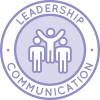
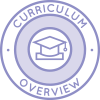
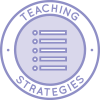
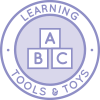
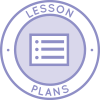
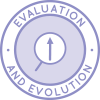
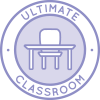

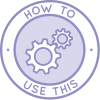





























































































































































































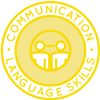



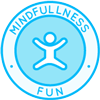
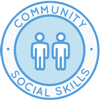

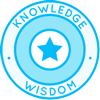
 One Community
One Community



